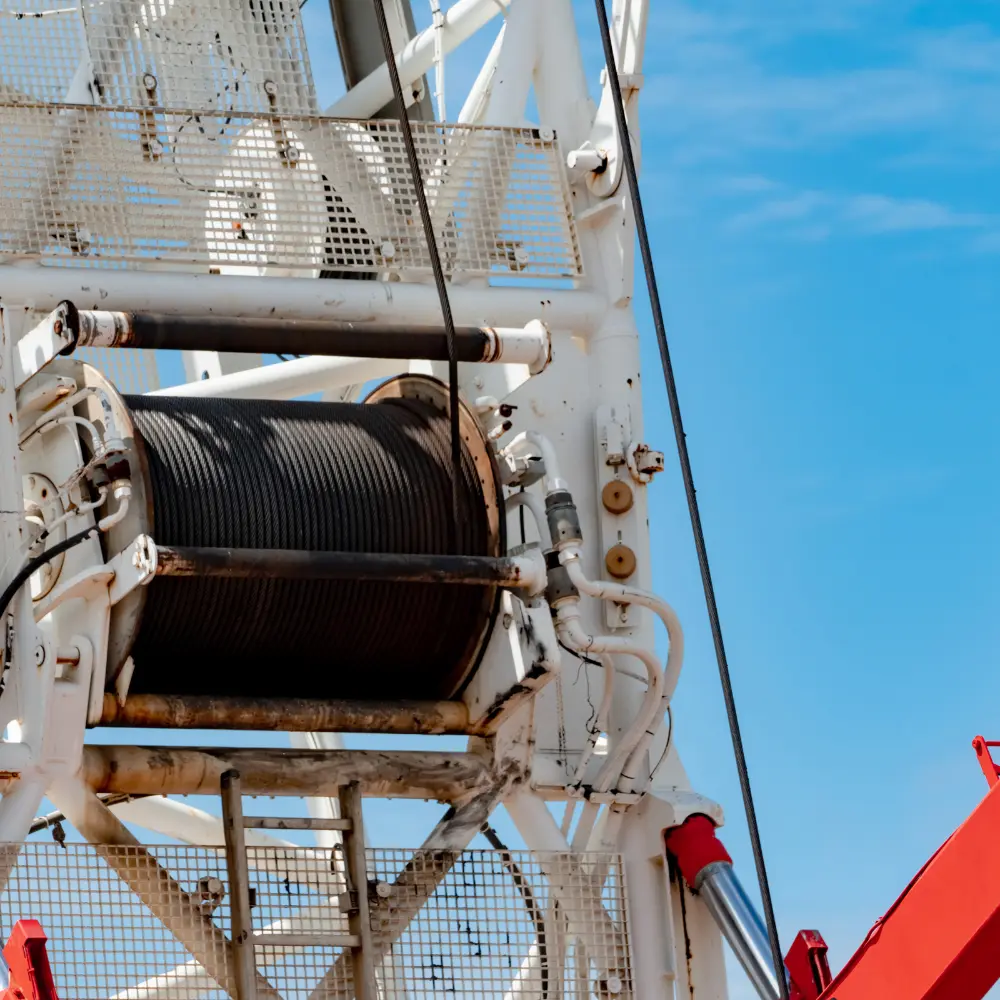 Fatigue life in large-diameter wire ropes is a key concern for professionals relying on heavy-duty lifting and surface mining. Despite advancements in wire rope manufacturing, one recurring issue is premature rope failure when operating under excessive loads. Research shows that catastrophic failures frequently occur when large-diameter wire ropes are subjected to loads above 45% of their ultimate tensile strength (UTS). This finding underscores the importance of effective load management in extending rope life and preventing early retirement due to fatigue. The consequences of not adhering to these practices can be severe, leading to unexpected downtime and potential safety hazards.
Fatigue life in large-diameter wire ropes is a key concern for professionals relying on heavy-duty lifting and surface mining. Despite advancements in wire rope manufacturing, one recurring issue is premature rope failure when operating under excessive loads. Research shows that catastrophic failures frequently occur when large-diameter wire ropes are subjected to loads above 45% of their ultimate tensile strength (UTS). This finding underscores the importance of effective load management in extending rope life and preventing early retirement due to fatigue. The consequences of not adhering to these practices can be severe, leading to unexpected downtime and potential safety hazards.
Why Load Management Matters
Wire ropes are built to handle significant tension, but load conditions largely influence their durability. When large-diameter ropes are exposed to high cyclic loads—specifically above 45% of their UTS—fatigue damage accumulates quickly, drastically reducing the rope's lifespan. Studies demonstrate that ropes subjected to high loads often fail in less than 1,500 cycles, far below the predicted life expectancy based on standardized small-diameter rope data.
These findings reflect the complexity of bending fatigue in wire ropes, where overloading leads to accelerated wear, particularly in the double-flex regions. The ropes undergo increased stress in this area as they pass over sheaves multiple times during each cycle. The continual bending causes internal strand wear and wire notching, which weakens the rope from within and results in brittle failures when load levels exceed safe operating limits.
The Science Behind Premature Failure
Rope failure at high loads is not simply a matter of excessive external wear or visible strand breaks. The rope’s integrity usually deteriorates internally due to interstrand and core wear. These failures are compounded in large-diameter wire ropes because the independent wire rope core (IWRC) experiences more stress at these higher loads. In contrast to small-diameter ropes with fiber cores, IWRC ropes are more susceptible to internal abrasion and lack the flexibility needed to mitigate notching damage in high-load scenarios.
For example, testing has shown that large-diameter ropes—particularly those used in surface coal mining and heavy equipment applications—suffer from wire cracking and core damage that isn’t always detectable through routine visual inspections. The IWRC's rigidity under high loads prevents the wires from adjusting to each other, causing concentrated stress points that lead to sudden, catastrophic failures rather than gradual deterioration.
Critical Insights for Wire Rope Operators
These findings highlight the need for rigorous load control for professionals like who manage wire ropes in demanding environments. The best practices for extending the service life of large-diameter ropes are within your control and include:
- Avoid exceeding 45% of UTS: Keeping operational loads within 30-40% of the UTS significantly increases rope lifespan, reducing the likelihood of fatigue failures in high-stress environments.
- Implement a load monitoring system: Real-time load monitoring provides immediate feedback on stress levels, ensuring that ropes are not consistently operating near critical thresholds.
- Use pre-tensioning techniques: Running ropes at lower loads before full operation allows the wires to settle into positions that reduce interstrand contact and notching, helping prevent premature wear.
Safety Through Wire Rope Fatigue Management
The research is clear: while large-diameter wire ropes are designed for heavy-duty applications, their fatigue life depends on load management. Operating ropes under continuous loads exceeding 45% of their UTS results in significantly shortened lifespans, often leading to sudden and catastrophic failures. Understanding the stress points within these ropes and implementing strict load control practices are essential for professionals like you, who rely on wire rope systems in surface mining, construction, and other industrial sectors. Your role in this industry is crucial, and your commitment to these practices is key to its success.
By focusing on effective load management and regular inspections, operators can prevent premature rope failures and ensure that their wire rope systems perform reliably over time, maximizing safety and cost-efficiency.
Related Reading